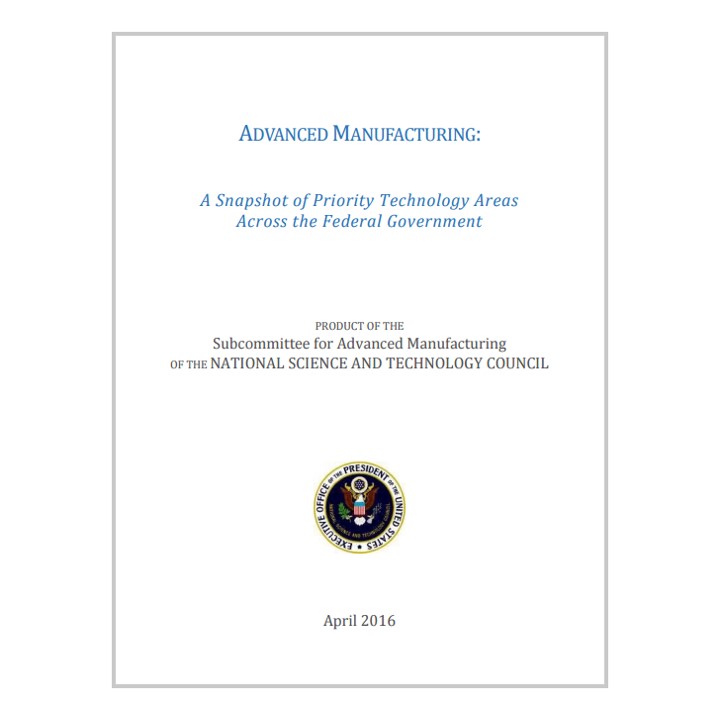“Manufacturing plays an outsized role in the U.S. economy: from the greatest economic multiplier of any other sector, to the creation of four (4) additional jobs for every manufacturing job, it is clear that the manufacturing sector is a critical driver to our country’s prosperity and security. These economic impacts grow as we add next-generation technologies: advanced manufacturing produces sophisticated and exclusive products that we can sell around the world, leading to greater economic prosperity and increasing the job multiplier to 16-to-1.” - Tom Kalil, Deputy Director for Technology and Innovation Office of Science and Technology Policy

Advanced Manufacturing: A Snapshot of Priority Technology Areas Across the Federal Government
Advanced manufacturing is a key driver for long-term economic prosperity and growth for the U.S. economy. The National Science and Technology Council has established a foundation of priority technology areas as a focus to secure U.S. competitiveness in this sector, from which collaborations between government, industry, and academia may be built. This document describes technology areas in advanced manufacturing that are current priorities for the Federal Government, and are strong candidates for focused Federal investment and public-private collaboration. Emerging technology areas include:
- advanced materials manufacturing
- engineering biology to advance biomanufacturing
- biomanufacturing for regenerative medicine
- advanced bioproducts manufacturing
- continuous manufacturing of pharmaceuticals
The Federal Government has already announced a number of advanced manufacturing technology areas that are either the focus of substantial existing investments or that may be the subject of future programming. These existing technology areas similarly require support across the development pipeline to fully leverage current research and development investments and infrastructure. Finally, Federal education and workforce training programs for manufacturing, which encourage strong industry involvement to ensure that today’s curricula meet tomorrow’s workforce needs, are highlighted.
“Growing and sustaining the innovation ecosystem we envision for advanced manufacturing will require concerted efforts across government, industry, and academia.”
This document was developed by the Subcommittee on Advanced Manufacturing (SAM) and published by the Office of Science and Technology Policy (OSTP); download full document here

